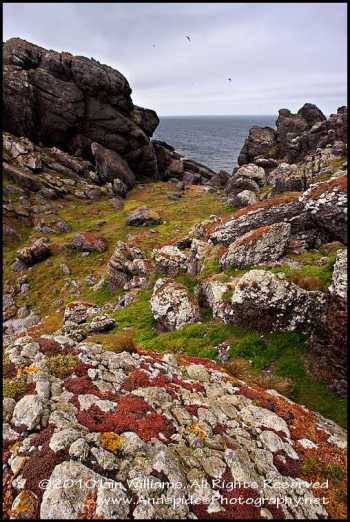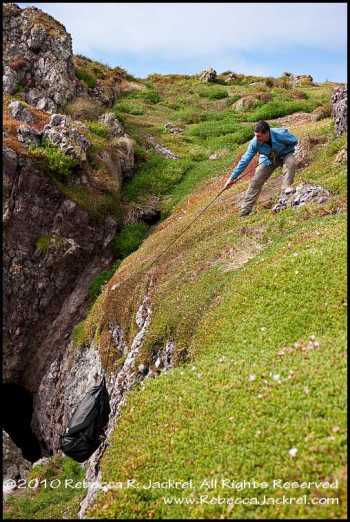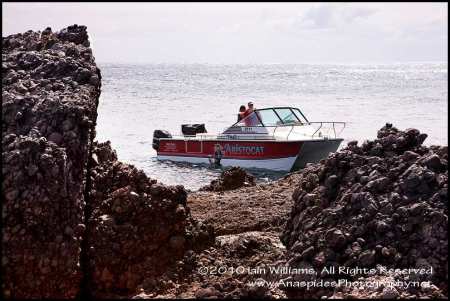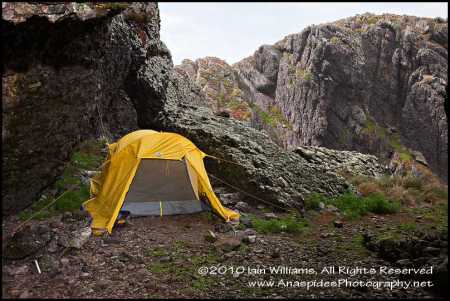Black-browed Albatross (Thalassarche melanophrys) - Falkland Islands
 Tuesday, September 20, 2011 at 10:18PM
Tuesday, September 20, 2011 at 10:18PM 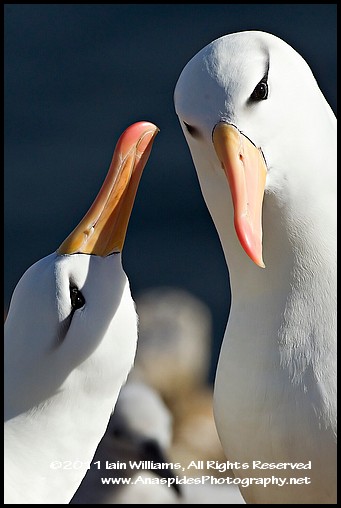 One would be remiss when discussing the Falkland Islands not to include the albatross. The islands are the breeding ground for 70% of the world’s population of Black-browed Albatross (Thalassarche melanophrys). Several colonies dot the archipelago with the largest colony located on Steeple Jason Island, an isolated island in West Falklands.
One would be remiss when discussing the Falkland Islands not to include the albatross. The islands are the breeding ground for 70% of the world’s population of Black-browed Albatross (Thalassarche melanophrys). Several colonies dot the archipelago with the largest colony located on Steeple Jason Island, an isolated island in West Falklands.
LEFT: Male and female black-browed albatross court to reunite the monogamous lifetime bond that unites the pair.
This species normally nests on steep slopes covered with tussock grass and sometimes on cliffs. They are an annual breeder laying one egg from between September and early November. Incubation is done by both sexes and lasts roughly 70 days. After hatching, the chicks take 120 to 130 days to fledge. Juveniles will return to the colony after 2 to 3 years but only to practice courtship rituals, as they will start breeding around the 10th year.
This delayed time until sexual maturity is one of the reasons that these birds, also called Mollyhawks because of their distinguishing black brow along the eye, is listed on the IUCN Red List as endangered. The population of albatross in the Falklands has declined 67% since population counts began in 1964. This decline is attributed to the increase in long line fishing practiced along the Patagonian Shelf and in particular off the coast of South Africa which is one of the regions the birds migrate to when feeding.
During my three weeks in the islands I was fortunate to visit 2 breeding locations and spent several days at one of the colonies. Sitting quietly along the cliff edge for many hours a day, the birds became very accustomed to your presence and for the most part lost their fear of humans and became increasingly curious. I had one fellow leave his nest and adolescent chick and waddle toward me to peck at my boot laces, hand and camera lens. It’s experiences such as this that make the often laborious task of wildlife photography worthwhile. If more people could appreciate the connection that occurs between species during such occurrences, then perhaps more people would be concerned about protecting habitat and allowing space for wild animals to remain wild.
 In the late afternoon when the breeze freshens is when the albatross truly show their grace. Taxi and liftoff is somewhat ungainly and is final approach and landing, however, in flight their nothing that matches the flight dynamics of the albatross. Their massive wingspan allows great lift and its possible for albatross to fly distances of thousands of kilometers with barely a wing beat. Often albatross can be seen skimming over waves and swells flying an almost nape of the earth pattern. They achieve this ability by harnessing the air pressure that the passing waves produce.
In the late afternoon when the breeze freshens is when the albatross truly show their grace. Taxi and liftoff is somewhat ungainly and is final approach and landing, however, in flight their nothing that matches the flight dynamics of the albatross. Their massive wingspan allows great lift and its possible for albatross to fly distances of thousands of kilometers with barely a wing beat. Often albatross can be seen skimming over waves and swells flying an almost nape of the earth pattern. They achieve this ability by harnessing the air pressure that the passing waves produce.
LEFT: Black-browed albatross looks carefully at its own reflection in the camera lens.
 I recall one afternoon when weather conditions were inclement for the best pilots to remain grounded; visibility was reduced to less than 100 meters and winds were buffeting to 40 knots. The albatrosses were cleared for takeoff and several dozen individuals were flying patterns along the cliff edge. Sitting on the cliff top was hazardous not for the risk of falling, but by being struck by one of birds diving overhead and making low passes to investigate me. Often all that was heard was a whoosh as an albatross cleared by head by inches! This said, the bird is a master in the air and if I kept still there was minimal chance that I would be hit unless a bird was in landing approach, which is very ungainly and would cause concern to the most experienced pilot.
I recall one afternoon when weather conditions were inclement for the best pilots to remain grounded; visibility was reduced to less than 100 meters and winds were buffeting to 40 knots. The albatrosses were cleared for takeoff and several dozen individuals were flying patterns along the cliff edge. Sitting on the cliff top was hazardous not for the risk of falling, but by being struck by one of birds diving overhead and making low passes to investigate me. Often all that was heard was a whoosh as an albatross cleared by head by inches! This said, the bird is a master in the air and if I kept still there was minimal chance that I would be hit unless a bird was in landing approach, which is very ungainly and would cause concern to the most experienced pilot.
ABOVE: Black-browed albatross sits quietly above sea cliffs waiting to reunite with its mate.
To view other posts concerning the shy albatross, click here.
To view my post on the wandering albatross, click here.



